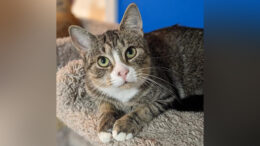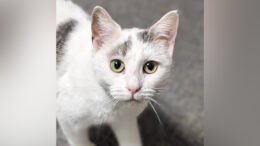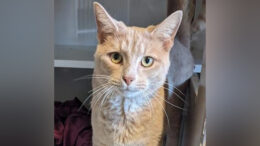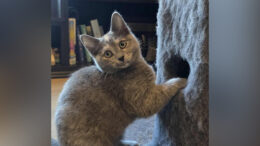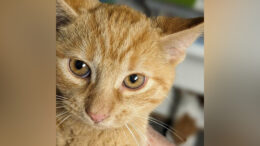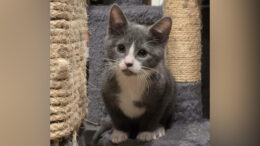Recent sightings of red-spotted purple butterflies brought to mind the saying that things can “be two sides of the same coin.”
The saying means that these things are very closely related although they seem different, according the Cambridge Dictionary website.
This would appear to be the case with the red-spotted purple butterfly or white admiral depending on where the butterfly is located.
The butterfly’s scientific name is limenitis arthemis.
The Butterflies of Massachusetts website, www.butterfliesofmassachusetts.net, broke down the difference by saying there are “two distinct phenotypes (physical characteristics) of limenitis arthemis, the southern-based red-spotted purple (non-banded) and the northern-based white admiral (white banded).
“The two very different forms had once been considered separate species,” Butterflies and Moths of North America said.
The website learnaboutbutterflies.com, said that “the reason for the apparent confusion is that the two subspecies are entirely different in appearance. The northern limenitis arthemis had dark brown wings, with broad white bands, and has no trace of the blue-purple sheen or the reddish spots at the apex of astyanax.”
The website butterfliesandmoths.org provides a description of the two forms.
For the red-spotted purple, “the upperside is blue to blue-green with much iridescence on the outer part of the hindwing. Underside is dark brown. Forewing has two red-orange bars near the base of the leading edge; hindwing has three red-orange spots near the base and a submarginal row of red-orange spots.”
For the white admiral the “upperside is black with broad white median bands on both wings; hindwing has a marginal row of blue dashes and a submarginal row of red dots. Underside is reddish-brown with white median bands as on the upperside.”
The north and the south
The site said the white admiral form “usually occurs north of a line through north central New England, New York, Pennsylvania, Michigan and Minnesota. The red-spotted purple form is usually found south of this line.”
The site went on to say that the purple form is a mimic of the coloration of the poisonous pipevine swallowtail.
Butterflies and Moths of North America added that where the two forms shall meet, hybridization occurs.
Hence, many websites added that the hybrids of these forms may also create unique looking butterflies.
A real looker
While all this biology talk might be confusing, one thing is for sure. The red-spotted purple butterfly is a real eye-catcher with its iridescent blues and hints of red.
“It is the most beautiful of our butterflies that I have seen,” American entomologist and botanist Thaddeus W. Harris wrote in the mid 1800s referring to the red-spotted purple form of Limenitis arthemis. The Butterflies of Massachusetts posted the quote in its description of the butterfly.
The sincerest form of flattery?
Recent Internet searches turned up that the red-spotted purple is not the only butterfly to mimic another.
Other sites said the viceroy butterfly, or limenitis archippus (yet another disguised member of the limenitis family), mimics the monarch butterfly’s coloring. The monarch feeds on milkweed and is poisonous and not very tasty to most of its predators.
Meanwhile, more tiger swallowtails appeared in the yard as the flower garden started to spread its colors around.
And, on a side note, the female of eastern tiger swallowtail has both a yellow and a black form. The black form can look like the spicebush swallowtail and sometimes the pipevine swallowtail.
All this “sciencing” can be a little overwhelming and confusing. The terminology brings about fuzzy flashbacks to high school biology and thought that “maybe I should have paid a little more attention back then.”
It’s enough to make one suggest that people just enjoy the colors of all the butterflies of the region and leave the identification process to the experts.
All abuzz
A bluet damselfly was photographed trying to steady itself against the wind as it “piloted” a leaf boat on the neighbor’s pond. This brought to mind the dragonfly-powered boat in the animated Disney movie “The Rescuers.” If memory serves, the movie dragonfly’s name was Evinrude, which is also the name of an outboard motor company. Coincidence? Probably not.
Several hummingbirds have made an appearance lately. They seem to prefer the flowers and not the feeders. Most looked like females.
However, young male hummingbirds can also look like females as they haven’t developed their flashy red patch (again with the look-a-like thing).
Crazy critters
Kyle (black and white) and Kennedy butt heads.
A Walk in the Woods contains photos from newsroom staffer Anna Applegate’s daily jaunts around her neck of the woods. Tagging along on the treks are dogs Buford, Sherman and Sadie, and goats Kyle and Kennedy. Applegate manages the Good Times and can be emailed at bigdogs.thederrick@gmail.com












